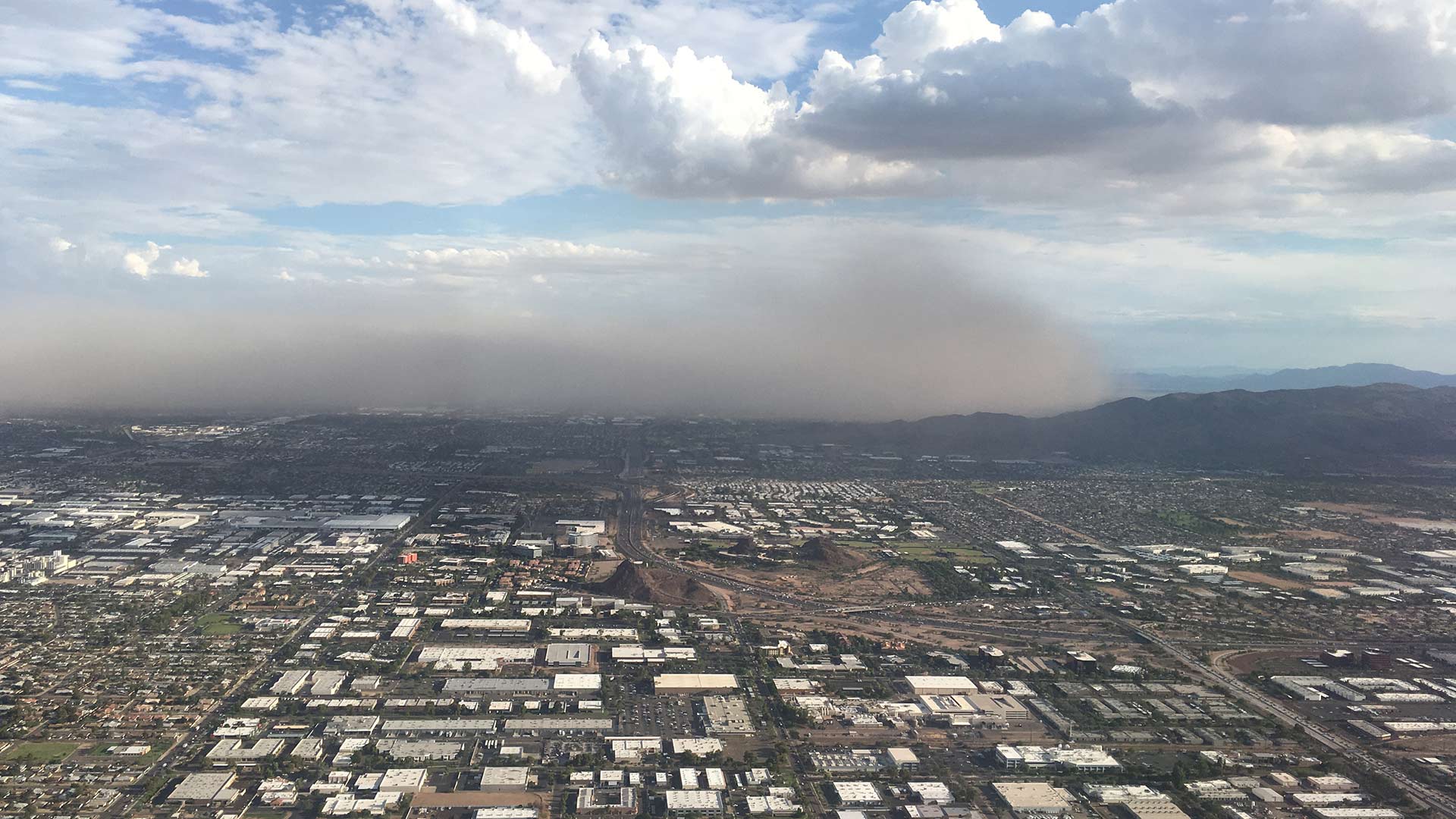 A dust storm approaches Phoenix on Aug. 21, 2017.
A dust storm approaches Phoenix on Aug. 21, 2017.
Have you been caught in a haboob? Have you driven on a frontage road? Have you ever used a swamp box?
These are some of the terms that one may hear during their time in State 48, and a majority of residents want to see them preserved.
According to a survey by the Writing Tips Institute, 57% of Arizonans polled supported the idea of the Arizona dialect being “made official by law (in order to protect it from dying out).”
The WTI described the state’s dialect as, “a unique blend of Spanish, Native American, and cowboy lingo, vocabulary, grammar, and intonation.”
But Karen Adams, a professor of linguistics, said the contours of the Arizona dialects are more nuanced than described. Adams is director of graduate studies in the Arizona State University department of English.
“There’s not one way of talking in Arizona,” Adams said. “There’s definitely differences in urban areas, and there’s differences in rural areas. There’s differences in the linguistic background of the speakers themselves.”
According to Adams, a dialect is composed not only of an area’s diction and pronunciation but the customs of speech as well. “There’s also what’s called ‘pragmatics.’ That has to do with norms about how to take turns, what’s polite, what’s not polite,” said Adams, who taught an ASU class called Speaking Arizona.
Arizona dialects stand as a living memorial to the forces that have shaped the state. Maricopa, Gila, and Cochise – all county names – each come from the language of Indigenous people. Mesa is the Spanish word for table but refers to the geographic feature. The pronunciation of the desert animal that is the mascot for the hockey team now playing in Tempe as “ki-yote” is a remnant of the Wild West. The Arabic word “haboob” was added to the lexicon by scientists in the 1970s to describe dust storms during monsoon season.
Though the Southwest may not have a dialect as culturally defined as, say, the American South or Northeast, Adams said there are a variety of ways to speak and sound “Arizonan.”
“As a linguist, I would have to say, ‘Arizona dialects,’ it’s plural,” Adams said. “We all have dialects, we all speak different varieties of English.”
The dialect is still being shaped as the population of the state grows and people add the way they speak into the melting pot. According to a University of Arizona report, 62,086 Californians moved to Arizona between 2014 and 2018. Washington and Texas come in second and third with both states providing over 15,000 new residents to Arizona over the five-year period.
“There’s always in-migration into Arizona, either from the West Coast or originally the East and the South,” Adams said. “As long as there’s continuous population movement, there’s going to be changes in the different varieties, depending on who’s moving into the area and who’s not.”
Dialects deal with what is heard, but the importance of preserving them is rooted in the identities they represent, Adams said.
“For people in some of the older communities in the Phoenix area, like Mesa or in some of the rural areas that are older, maintaining those particular usages is our way of saying we’re still here, and really, we’re an important part of this state,” Adams said.
Though there is no current legislative push to preserve the Arizona dialects, legislators could take a cue from the United Kingdom, where multiple languages and dialects co-exist.
In 2011, the Welsh National Assembly passed measures to make Welsh an official language within the country and created the role of the Welsh language commissioner to protect and develop the use of the language.
“What that means in essence, is that the public in Wales should be able to access services, public services through the medium of Welsh in Wales,” Welsh Language Commissioner Efa Gruffudd Jones said in an interview. “You would certainly see, not in all of the shops, but in many shops on the high street, Welsh side by side with English signs. You would see if you went to support the Welsh football team that announcements would be made in Welsh and in English on the (speaker).”
According to Census 2021 in the United Kingdom, 17.8% of the population is able to speak Welsh. The Position of the Welsh Language 2016-20 report also stated that 86% of the Welsh population said that the language is something to be proud of, and 67% said that more needed to be done to protect the language.
Jones echoed that the way people speak – whether an official language or regional dialect – is integral to how the nation views itself.
“There’s no question that the Welsh language is part of a Welsh identity, and it’s part of what makes Wales different from the other parts of the United Kingdom,” Jones said. “However, we’ve been at pains to say that the Welsh language belongs to us or whether you speak the Welsh language or not.”
Though there are contours and nuances to the way Arizonans speak, Ryan Clark, who moved to Arizona from Montana 11 years ago, said there is one common thread through the dialects.
“The one thing that I’ve always noticed all Arizonans say is: It’s a dry heat.”

By submitting your comments, you hereby give AZPM the right to post your comments and potentially use them in any other form of media operated by this institution.